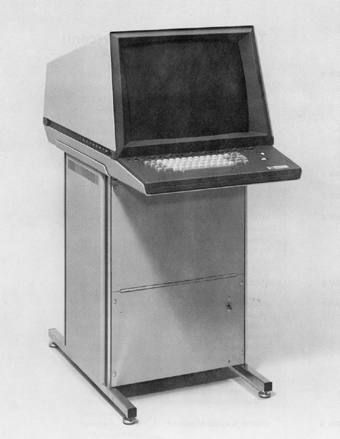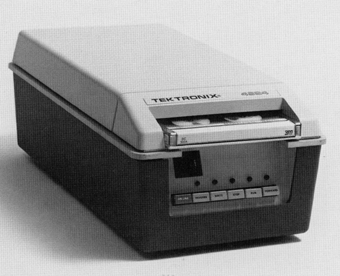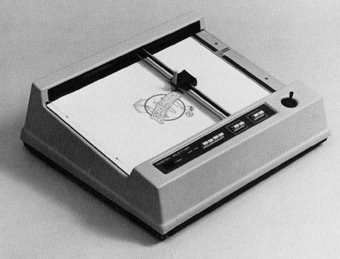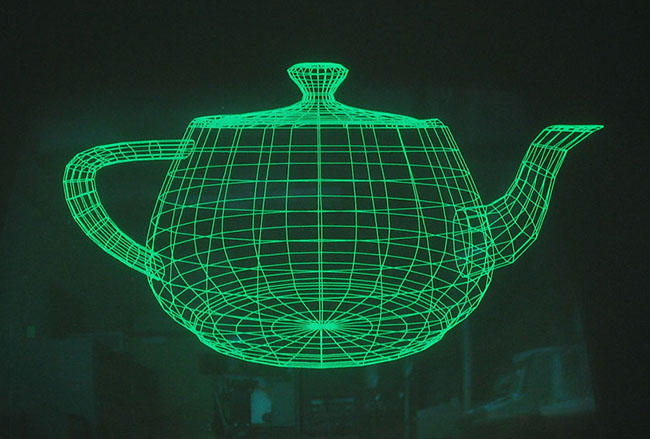Tektronix 4014 graphics terminal
UvA Computer Museum catalogue nr 94.10

Memory, necessary to maintain an image on the CRT screen of a terminal was prohibitively expensive. For the minimum useful number of 1024 * 1024 adressable points the cost of (core) memory alone would be 100,000 dollars in 1970.
The Tektronix 4014 uses a cathode-ray tube which is capable, due to a special electron optics system, of holding almost indefinitely the image written on its face. Writing the image by the electron beam is done 'calligraphically', in the same way as a vector plotter. The display is monochrome (green on black). Animation of pictures is not possible. Graphics interaction is done by moving a crosshair cursor with a pair of thumbwheels. The coordinates of the cursor are sent to the computer on hitting a key (or on the computer's request).
The 4014, though still expensive has been very popular, in particular for industrial computer aided design applications. Many modern graphics workstations are still capable of interpreting the 4010 series instructions set. With the advent of raster-scan terminals (made possible by the quickly decreasing price of memory), various companies built 4010 emulators (for instance, the CITOH CIT-414a in our collection).
Our Tektronix 4014 has 4096 * 4096 addressable points (4096 * 3120 viewable) and must have cost well over $50,000 in 1974. We are using it for live demonstrations, the driver and application software being written in Turbo Pascal and running on a PC-AT.
In our collection we also have from the 4010 series the models 4012, 4103 (with APL character set) and a spare 4014. Furthermore 4010 series peripherals: 4631 and 4611 hardcopy devices, 4924 cartridge tape recorder, 4662 plotter and 4957 graphics tablets. Predecessor of the 4010 series was the Tektronix 4002A.
Click here for a picture of the famous Computer Graphics Teapot taken from the screen of our 4014.
Our instruments of the 4010 family were donated by Holland Signaal (Hengelo, The Netherlands), the University of Amsterdam, and the Technical University Delft.
The photograph of the 4014 terminal was taken from the User's Instruction Manual (1974).



